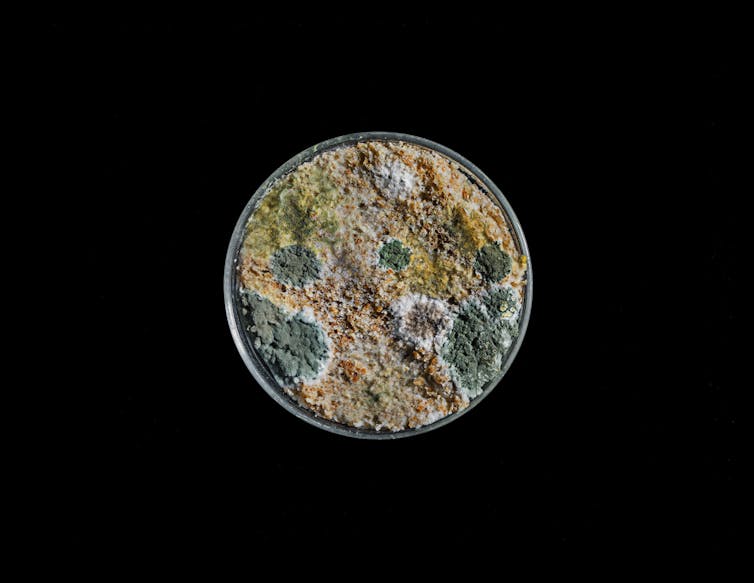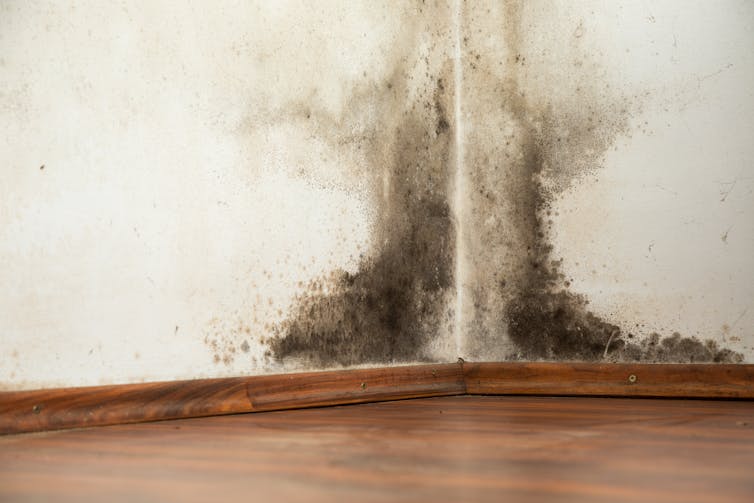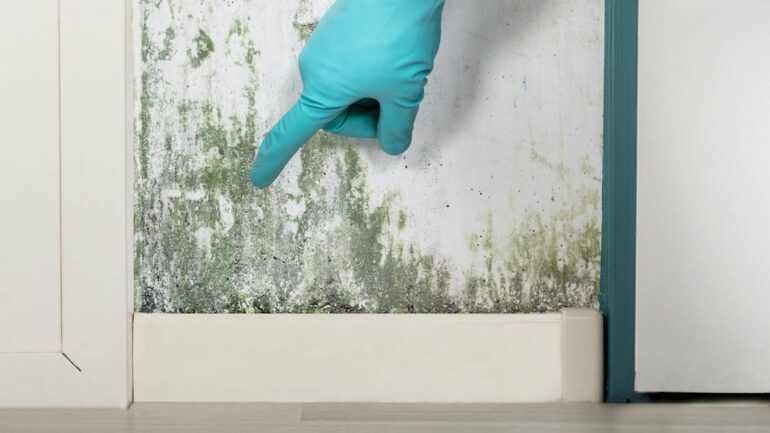Mold growth in your home can be unsettling. Blackened spots and dusty patches on the walls are signs that something is amiss, but it is important to distinguish between mold growth that is a nuisance and mold growth that may be harmful.
There are more than 1 million species of fungi. Some are used to produce important medications. Others can cause life-threatening infections when they grow in the body.
Microscopic fungi that grow in homes are a problem because they can trigger asthma and other allergies. In my work as a fungal biologist, however, I have yet to encounter robust scientific evidence to support claims that indoor molds are responsible for other serious illnesses.
What are molds?
Molds are microscopic fungi that grow on everything. This may sound like an exaggeration, but pick any material and a mold will be there, from the leaves on your houseplant to the grain in your pantry and every pinch of soil on the ground. They form splotches on the outside of buildings, grow in crevices on concrete paths and roads, and even live peacefully on our bodies.
Molds are important players in life on Earth. They’re great recyclers that fertilize the planet with fresh nutrients as they rot organic materials. Mildew is another word for mold.

Mold colonies on a culture dish.
Jonathan Knowles/Stone via Getty Images
Fungi, including molds, produce microscopic, seed-like particles called spores that spread in the air. Mold spores are produced on stalks. There are so many of these spores that you inhale them with every breath. Thousands could fit within the period at the end of this sentence.
When these spores land on surfaces, they germinate to form threads that elongate, and they branch to create spidery colonies that expand into circular patches. After mold colonies have grown for a few days, they start producing a new generation of spores.
Where do indoor molds grow?
Molds can grow in any building. Even in the cleanest homes, there will be traces of mold growth beneath bathroom and kitchen sinks. They’re also likely to grow on shower curtains, as well as in sink drains, dishwashers and washing machines.
Molds grow wherever water collects, but they become a problem in buildings only when there is a persistent plumbing leak, or in flooded homes.

Mold can grow in damp or poorly ventilated areas of your home.
Urban78/iStock via Getty Images Plus
There are many species of indoor molds, which an expert can identify by looking at their spores with a microscope.
The types of molds that grow in homes include species of Aspergillus and Penicillium, which are difficult to tell apart. These are joined by Cladosporium and Chaetomium, which loves to grow on wet carpets.
Stachybotrys is another common fungus in homes. I’ve found it under plant pots in my living room.
When does mold growth become a problem?
Problematic mold growth occurs when drywall becomes…


